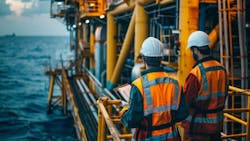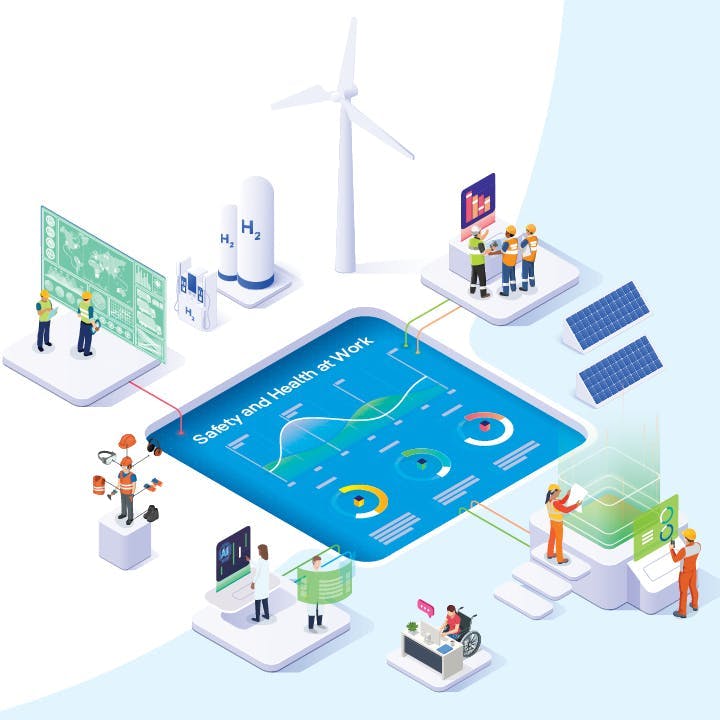Manager's perspective: Offshore safety training must evolve
By Andy Bligh, Draeger UK
While safety is widely recognized as a critical priority across the offshore industry, the degree of commitment and the effectiveness of implementation can vary. Cultural factors, economic pressures and leadership all play a role in shaping how safety is perceived and practiced offshore. Understanding these attitudes is essential to fostering a proactive safety culture that goes beyond compliance and protects workers and the environment.
All too often the challenge isn’t a lack of training opportunities; it’s that many of these sessions simply aren’t effective or engaging. According to Dräger’s latest Safety and Health at Work Report 2025, after workers attended safety courses—the energy industry average being 3.04 courses over two years—the real test lies in whether these sessions lead to being (and not just feeling) safe offshore. Unfortunately, far too often, they don’t.
On-the-job training most effective method
Traditional safety training, which is often conducted in classrooms or through online modules, is no longer sufficient. These formats can be disengaging and disconnected from the practical realities offshore workers face. A shift is needed toward experiential, scenario-based learning that simulates real-world emergencies and cultivates instinctive and confident responses.
According to the report, which was launched in June, 78% of energy workers ranked on-the-job training as one of the most effective methods—far ahead of traditional classroom or online formats.
Training that includes hands-on activities such as navigating confined spaces, managing gas leaks or executing emergency evacuations in realistic environments creates lasting behavioral change. Workers develop muscle memory and practical problem-solving skills, which are attributes that can be life-saving in high-pressure scenarios.
Moreover, training programs should be led by instructors with genuine field experience. Former offshore personnel bring authenticity, credibility and nuanced insights that help trainees internalize procedures not just as protocols, but as critical, lived experiences.
Acceptance of AI in the energy industry
Digitalization is also reshaping industry norms. Dräger’s research shows that the energy industry leads AI adoption with 76% favoring a balanced approach between human oversight and technology. The sector also has a higher awareness (49%) of AI’s role in safety than other industries, with 48% believing that AI can improve employee training programs through immersive simulations.
As the offshore industry embraces digital transformation, safety training must evolve in tandem. Technologies like AI, machine learning and real-time data analytics offer promising tools for enhancing both hazard awareness and training effectiveness.
Equipment including gas detectors, wearable sensors and self-contained breathing apparatus can now be used to monitor real-time environmental and human risk factors. This data can then by analyzed, enabling detailed analysis of hazards, incident trends and worker behavior. Insights from this data support predictive risk modeling and allow safety managers to identify potential dangers before incidents occur. Most importantly, the data informs targeted, realistic safety training tailored to specific risks, roles and environments. These technologies don’t replace human oversight; they augment it. The key is striking the right balance, using data and simulation to inform and personalize training, while preserving human judgment and adaptability. The result is safer behaviors embedded before boots even hit the rig floor.
An effective safety culture
While technology and methods matter, mental health, psychological safety and team dynamics also play crucial roles. Data shows that 84% from the energy sector say mental health and wellbeing are inseparable from workplace safety. Fear of speaking up, blame culture and lack of leadership support can undermine physical safety.
An effective safety culture encourages open communication, peer-to-peer learning and leadership accountability. Training programs must address the emotional realities of offshore work (e.g., isolation, stress and high-stakes decision-making) and foster environments where wellbeing is recognized as integral to operational safety.
Bottom line
Ticking boxes isn’t enough, not when lives are at stake. As the offshore industry evolves, the approach to safety training must evolve too. By making safety education practical, immersive, data-informed and psychologically supportive, the industry can better prepare its workforce for current and future challenges.
About the Author

Andy Bligh
Andy Bligh is the system services and training manager at Draeger Safety UK. He has been with Draeger for 15 years. Originally field based as a systems engineer, he moved into the service and academy team, where he is currently the academy training manager for the UK. Bligh has a vast knowledge of the training requirements for the UK energy sector, both from his own hands-on experiences to building and maintaining suitable training programs.

